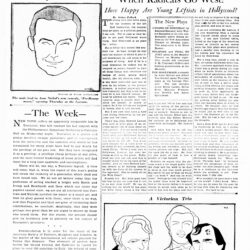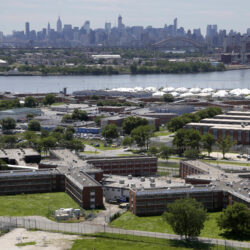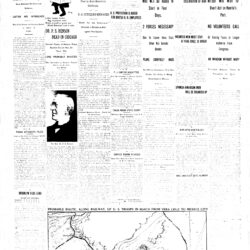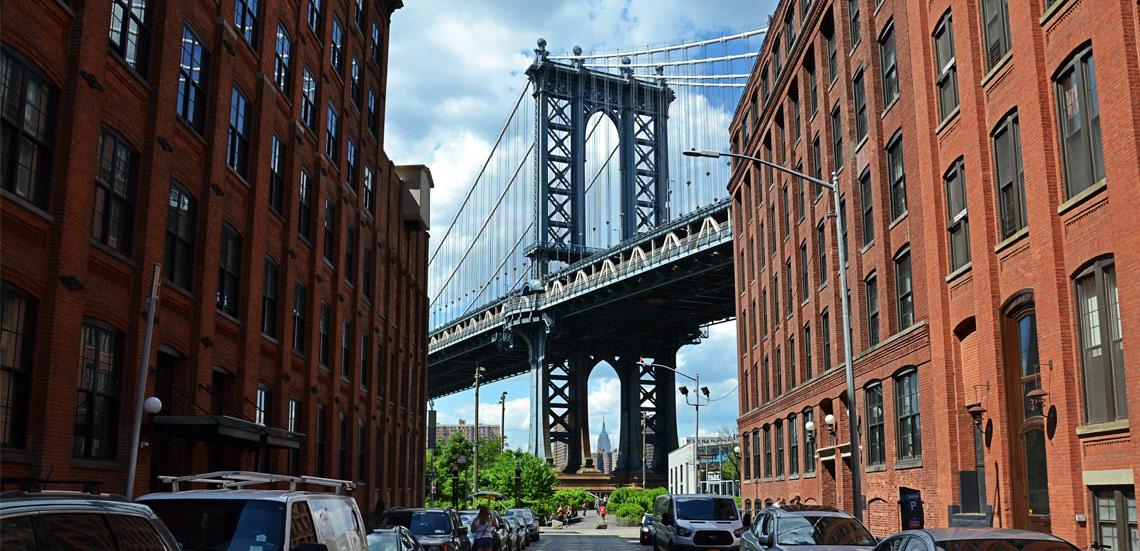
✰PREMIUM
Spotlight: The true story of the Rikers rat wars
Before Rikers became the sprawling penitentiary it is today, it was home to the world’s largest congregation of rats. Huge, fierce and wildly intelligent, these rats were not so easy to eradicate.

A Putrescent Mass
In 1939, Robert Moses had a problem. The World’s Fair was scheduled to kick off at Flushing Meadows–Corona Park in Queens on April 30, and Parks Commissioner Moses, already one of the most powerful men in the state, was keen to make sure New York City looked its best for the tens of millions of international visitors who would soon flood the city.
The World’s Fair was a chance to show off the grand public works Moses had been building over the past decade, like the Triborough Bridge, the Grand Central Parkway and Jones Beach State Park — an opportunity to launch himself onto the world stage.
Less than four miles away from Corona Park, festering in the mouth of the East River like a canker sore, an island of trash hundreds of acres large burned day and night. A fetid skyline of piled refuse in full sight and smell of the Fairgrounds: Rikers Island.
“Such a mass of putrescent matter was perhaps never before accumulated in one spot in so short a time,” Harper’s Weekly wrote of Rikers Island in 1894.
On the southern end of the island was a fledgling penitentiary. Today the Rikers penitentiary takes over the entire island and makes up one of the world’s largest correctional institutions, housing 10,000 inmates. But back then, the northern end of Rikers was New York City’s toilet bowl, a place where unwanted things and unwanted people could be jettisoned, out of sight.
For Moses, a man obsessed with urban order, Rikers Island was an intolerable blight. And with the World’s Fair just around the corner, it needed to be dealt with fast.
A forest of Christmas trees
New York City bought Rikers Island in 1884 from the Rycken family, descendants of early Dutch settlers who had owned the island since 1664. The city acquired the island for $180,000, intending to use it as a workhouse, but the Department of Sanitation quickly discovered it was a useful place to store the city’s immense trash loads. Over the following decades, the island swelled from 87 to 415 acres, largely through landfill operations.
The mass of waste decomposing in the sun released tons of methane gas, and, combined with the ash residue of a coal-operated city, trash fires burned uninterrupted for years. In 1931, Department of Correction (DOC) officials discovered a fire they believed to have been burning underground for eighteen years.
“Crossing the island on foot, up and down the sloughing walls of its canyons would be practically impossible,” wrote one visitor to the island. “One would be buried in ill-smelling landslides, provided he did not break through and fall into the subterranean fires.”
By 1903, the city had begun to use Rikers Island to house a small penal farm. Inmates worked on one side of the island, away from the landfill and fires, to fortify the island’s seashore, or tend to the island’s large crop garden, which grew dozens of fruits and vegetables for consumption on the mainland. They also managed a sizable hog farm, producing pork products that were fed to incarcerated people throughout the city. They were not compensated for their work.
In 1922, a court order prohibited New York City from dumping garbage into the Atlantic Ocean, which only accelerated the waste dumping on Rikers. The island accumulated 1.5 million cubic yards of additional refuse. The Brooklyn Daily Eagle described Rikers in a 1934 article as “an immense mountain range of trash…whose top is heaped each day (with) enough ashes, paper, discarded furniture and sweepings to cover ten city blocks twelve feet deep.”
The article continued with a quote from Warden Eugene Kearney, “At night it is like a forest of Christmas trees,” the Rikers commissioner said. “First one little light then another, until the whole hillside is lit up with little fires.”
The fumes from the garbage were reported to induce “violent nausea” for private residents and steamboat residents on the East River.
The spontaneous fires were said to persist through winter and summer, thunderstorms and blizzards. “The pumps that pour steady streams of water unceasingly make… little impression on the fires,” the New Yorker wrote in 1931.
For years, experts had been envisioning Rikers Island as the location for a “model” penitentiary, to lead the world in the application of modern carceral methodologies and philosophies. In 1929, New York Times reporter Virginia Pope wrote of the “finest and most up-to-date penitentiary in the United States,” with a “real hospital,” a “maximum of sunlight,” and “up-to-date plumbing.”
By the early 1930s, the city was facing a crisis in its largest prison complex, located on Blackwell’s Island (now Roosevelt Island), and in jails across the city. Dangerous conditions and overcrowding were causing riots. The city had little choice but to expedite the construction of the new penitentiary on Rikers Island, which began housing its first detainees in 1932.
A proper fighting spirit
Amid this infernal cesspool, rats thrived.
The Department of Corrections reported a million rats on Rikers by the 1910s. These were not the ordinary rats of today. The forebears of New York City rats are legendary for their size, ferocity and cunning. With an unlimited supply of garbage on which to feast, and no natural predators to curb their breeding, they grew monstrously large and proliferated exponentially.
Irving Billig, a New York City exterminator who plays an important part in this story later on, remembered the remarkable ingenuity of these creatures.
“I’ll swear to this. One night, in the warehouse of a grocery chain, I saw some egg-stealing rats at work. They worked in pairs. A small rat would straddle an egg and clutch it in his four paws. When he got a good grip on it, he’d roll over on his back. Then a bigger rat would grab him by the tail and drag him across the floor to a hole in the baseboard, a hole leading to a burrow. The big rat would slowly back into the hole, pulling the small one, the one with the egg, in after him.” — Irving Billig, quote from the New Yorker, 1944
For the first couple decades of the 20th century, New York City waged a losing war against the Rikers rats.
The city began with poison, but this proved too dangerous to the inmates and city officials living on the island. Next was toxic gas, but the rats just burrowed into their skyscrapers of trash until the gas cleared. Officials tried staging rat hunts, shooting individual rats with a shotgun, but this was too inefficient, as were the traps rigged by the DOC, which, despite being described as “many and ingenious,” had little effect.
Officials found some success in the 1910s by bringing in specially-trained dogs. According to Heather Rogers, in her book, “Gone Tomorrow: The Hidden Life of Garbage,” the dogs were fed little else but the rats they could catch themselves. They became very popular to the island’s inhabitants.
One of the most successful rat-killers was Battle Axe-Bill, an Irish terrier with a ferocious appetite for rodents and a “proper fighting spirit,” as described by the New York Times. It was said that Bill once took on five rats at a time, and emerged victorious.
At the time, Rikers was a divided land. The prison complex and its attending buildings on the southern end of the island belonged to the humans. In the north, the rats ruled over their ever-growing kingdom of filth and fire. The garbage scows ferrying waste from the mainland continuously fed them, and served as the rats’ bridge into the five boroughs.
Between the two domains was “a jolly little garden spot and piggery” where prisoners could “raise their vegetables and bring up their pigs in peace and content.” But when food ran low in the dump, the rats would swarm the piggery, devouring the animals alive. Even the dogs, after months of nothing but rat meat, were known to turn on the pigs.
The dogs could not eliminate the rats, but they could keep them to their end of the island, maintaining a front line that protected the prisoners and city workers from the worst of the infestation. “It would be impossible for the men to work on the island if it were not for the dogs,” said Patrick Hinds, superintendent of the Rikers Island dumping ground, in 1930.
As with any war, there were casualties on both sides. Some dogs were swarmed and killed by the rats. A black-and-tan dog named Pete was said to have been cornered by a pack of fearsome rodents, which killed and devoured him. One of the casualties was Battle-Axe Bill, who after years of service succumbed to a swarm of rodents, which feasted on his remains.
Though the dogs kept the rat population from ballooning out of control, it remained as indomitable as ever.
“Now that Battle-Axe Bill is gone the rats on Rikers Island rejoice,” the New York Times wrote in an article from August, 1915. “Now that he is gone the rodents threaten again to become aggressive.”
The rat age
By 1930, DOC estimates put the rat population on Rikers at over two million. They were so ferocious that it was “unsafe for a man to venture alone on the island at night unless armed with a stout cudgel,” according to a New York Times article from 1930.
Determined to turn the tide, the city launched its next offensive in September 1930, enlisting the expertise of the Billig brothers, Irving and Hugo, exterminators with a reputation for tackling the worst infestations in New York.
Irving, in particular, was a veteran of the city’s dirtiest battles, Described by the New Yorker as a “plump, well-dressed, and soft-spoken” man, Irving knew better than anyone what they were up against.
“[An East River slaughterhouse] had a bad problem and I was called in to study it. I hid in a room where there were some sides of beef hung on hooks, about three feet clear of the floor. Around eleven p.m. the rats started wriggling in. In fifteen minutes there were around two hundred in the room. They began jumping for the beeves [sic], but they couldn’t reach them. Presently they congregated under one beef and formed a sort of pyramid with their bodies. The pyramid was high enough for one rat to jump up on the beef. He gnawed it loose from the hook, it tumbled to the floor, and the two hundred rats went to work on it.” — Irving Billig, quote from the New Yorker, 1944
The Billigs’ first strategy was to pump poison gas into the warren of rat burrows running 30 or 40 feet underground. They used a substance similar to the mustard gas of World War I, a chemical so deadly it had been banned from warfare under the Geneva Protocol. But against the rats, the attack did little damage. When the noxious fume clouds had cleared, only a dozen corpses were found.
By November of 1930, the Billigs changed tact. They devised a plan to sprinkle lumps of bread infused with Ratopax — a poisonous liquid imported from Europe — across an area of 96 acres. The poison was nonharmful to humans, dogs and pigs (Irving Billing was known to take swigs of the poison occasionally to prove its safety), but it caused the rats to “seek the open and the water”, before dying by choking. On the first day, the New York Times reported 3,000 to 3,500 rodent casualties littered across the shoreline.
A bait-and-trap campaign also proved promising, yielding about 2,500 kills a day. But it was far from enough; the rats continued to breed faster than they could be killed.
At one point, someone suggested importing thousands of snakes to the island. The idea was never acted on.
In 1931, the New Yorker painted a grim picture of the state of Rikers Island.
“There are five million rats, exactly. The fire has burned the rubbish for twenty years without interruption. There are five hundred convicts, and one thousand pigs. Sixteen scowloads of rubbish…arrive every day, and a few rats come along with each load for the ride…. The Rikers Island colony is the biggest in the world. Some of the rats weigh five pounds. They will attack pigs, dogs and human beings, and make good.” — Jan 17, 1931.
It was clear that once again, the battle had been lost.
“Nothing but magic, nothing but a reincarnation of the Pied Piper of Hamelin with power to lure rats off into the river to drown can rid this island of its hundreds of thousands until their work is done,” wrote the New York Times in the early 1930s.
“If the rats come out of their holes by the millions some night and take over City Hall and start running the city, I won’t be the least bit surprised,” Irving Billig said later in his life. “A few more world wars, a couple of epidemics of the bubonic plague, and the Machine Age’ll be done for; it’ll turn into the Rat Age.”
Chronicles of the rat war die down after the Billig brothers, but a New Yorker update from 1935 suggests that after decades of bitter conflict, perhaps an equilibrium was reached. “Life goes on pleasantly,” the New Yorker wrote, “the convicts take care of the pigs, the wardens take care of the convicts, spontaneous combustion takes care of the fires, and rubbish takes care of the rats.”
The World’s Fair
This was the state of affairs when the World’s Fair came to Queens in 1939. Moses may have been the city’s greatest builder, but not even he could clean up Rikers in one year.
What he could do was sanction the pivotal move that would allow for the island to recover, and redirect trash to a new landfill in Staten Island, known as Fresh Kills. Initially intended as a temporary solution, Fresh Kills Landfill continued to serve as the principal landfill for New York City until its closure in 2001. Moses also ordered millions of cubic yards of garbage and ash to be covered up, which he hoped would suppress the fires and solve the rat problem.
Moses also oversaw the cultivation of greenery to camouflage the island. He ordered a tree nursery to be built on Rikers, but the oaks, Norway maples and American elms were poisoned within the year by methane gas.
“The roots of these trees were hot, giving off a sour odor, and were black in color,” wrote Director of Horticulture David Schweizer in Aug. 1940.
It would be a long road, but Moses was determined to be the one to fulfill the promise of building the “finest…penitentiary in the United States,” set out by Virginia Pope in 1928.
“Too much work has been done on (the nursery) … and too much publicity to allowed [sic] a few people suddenly to change their minds,” Moses wrote in an August 1940 memo. “[Get this] group of geniuses … together again and reconsider.”
We will have more on the history of Rikers Island post-1940 in a future Spotlight.
Leave a Comment
Leave a Comment





